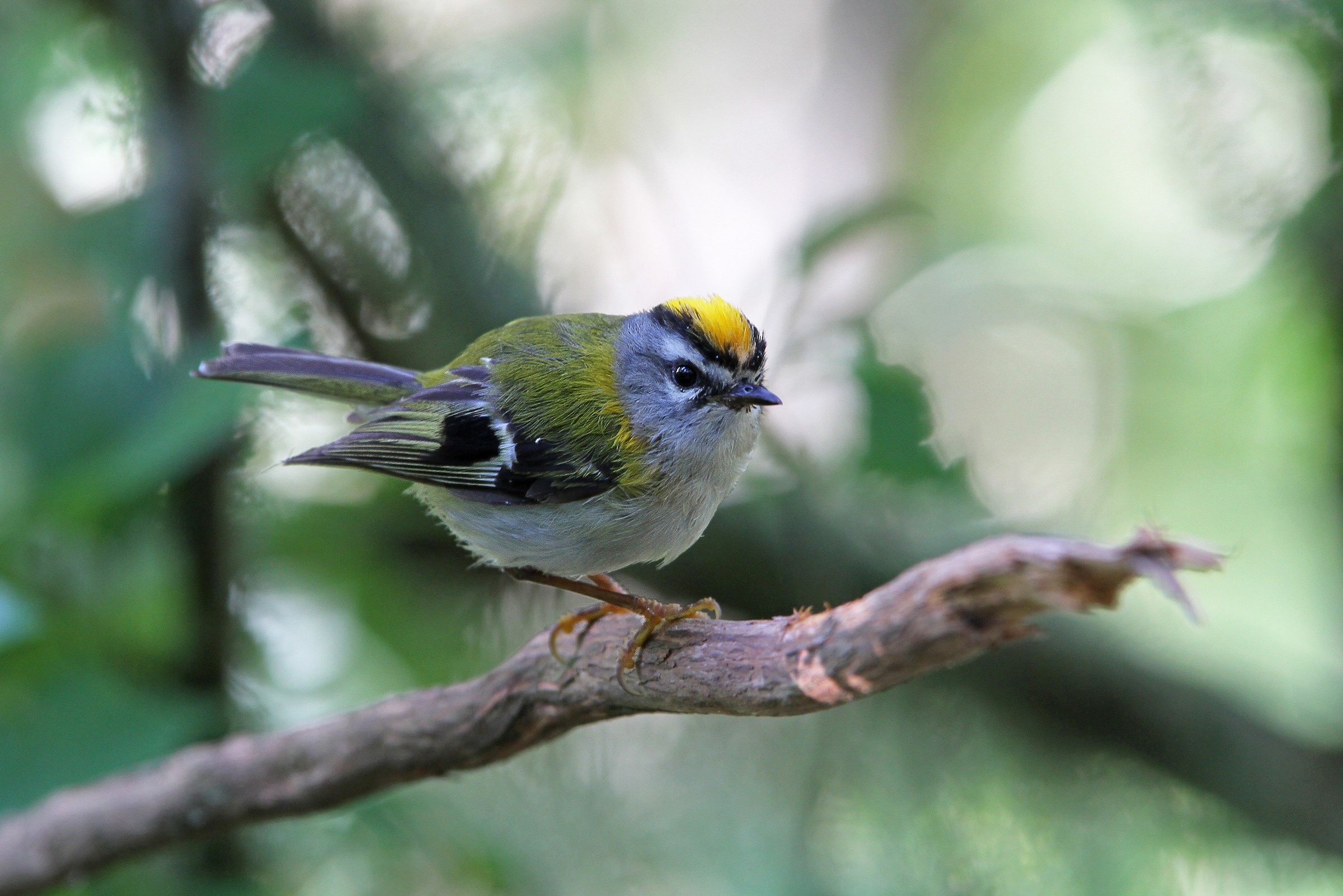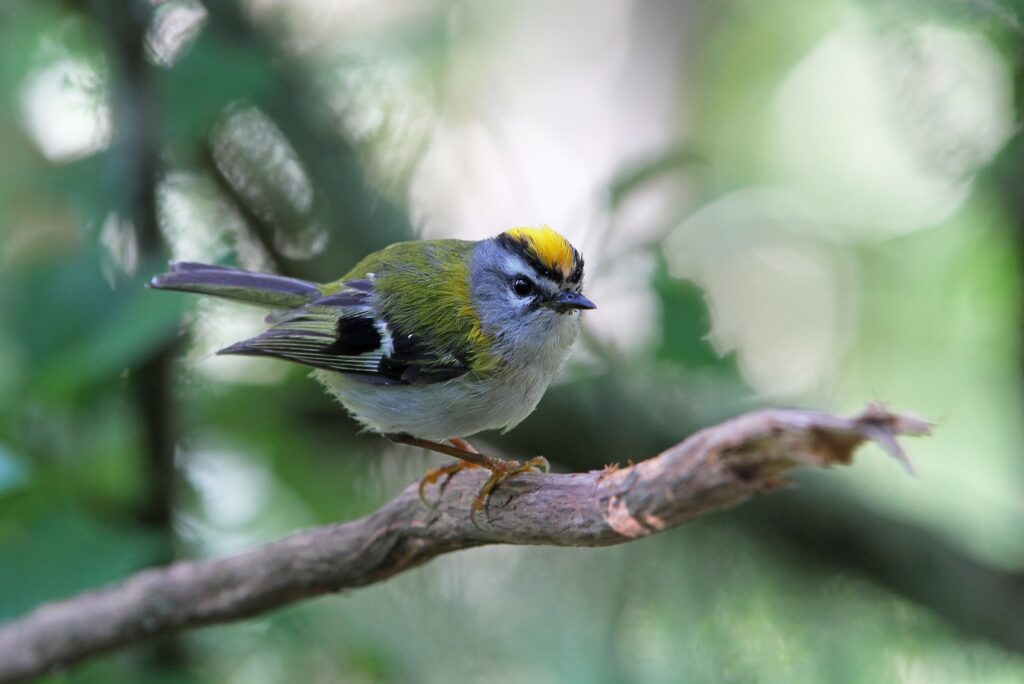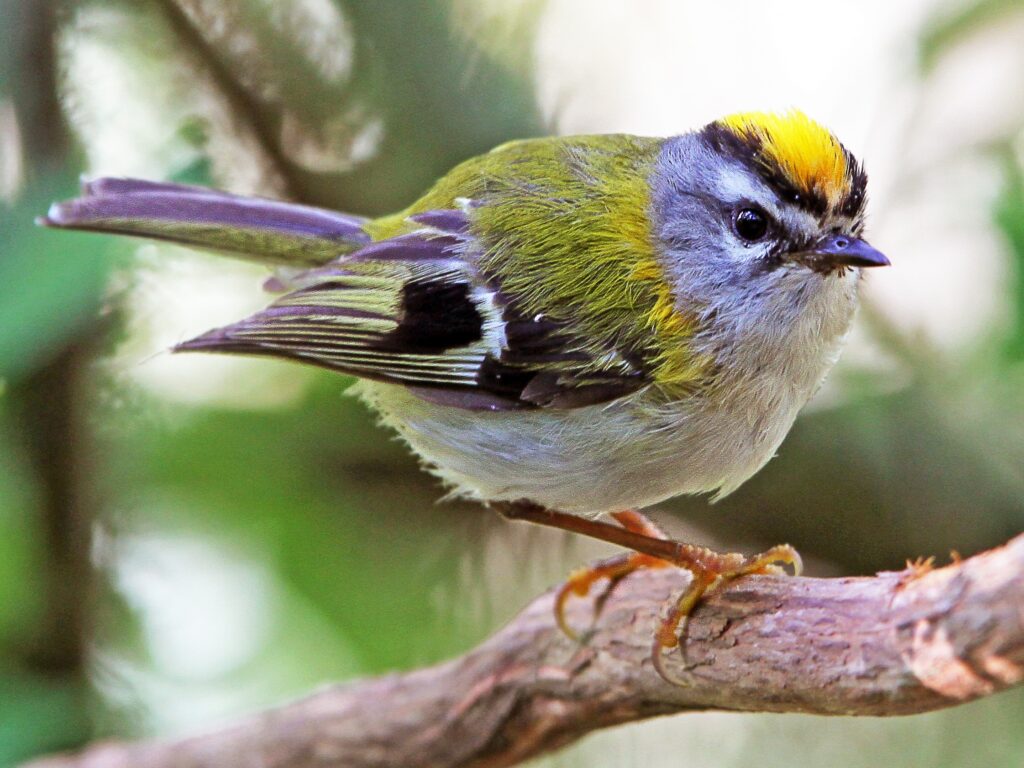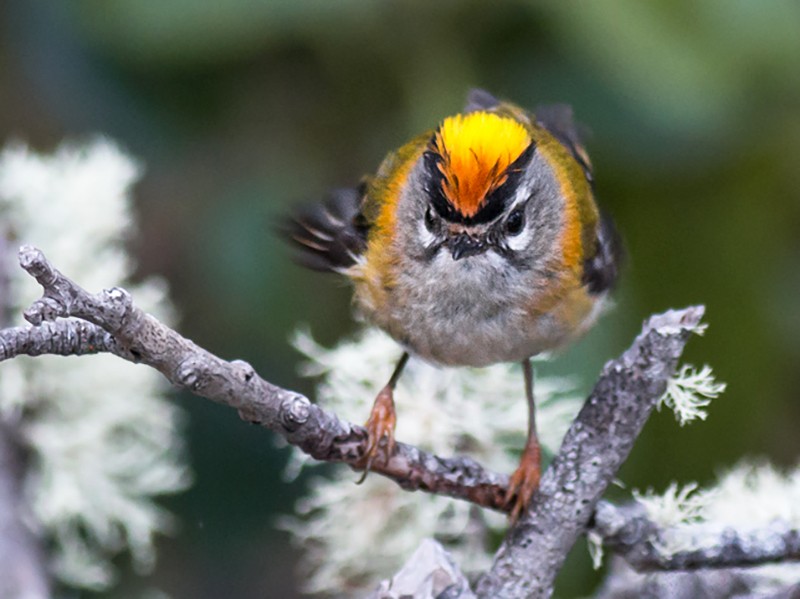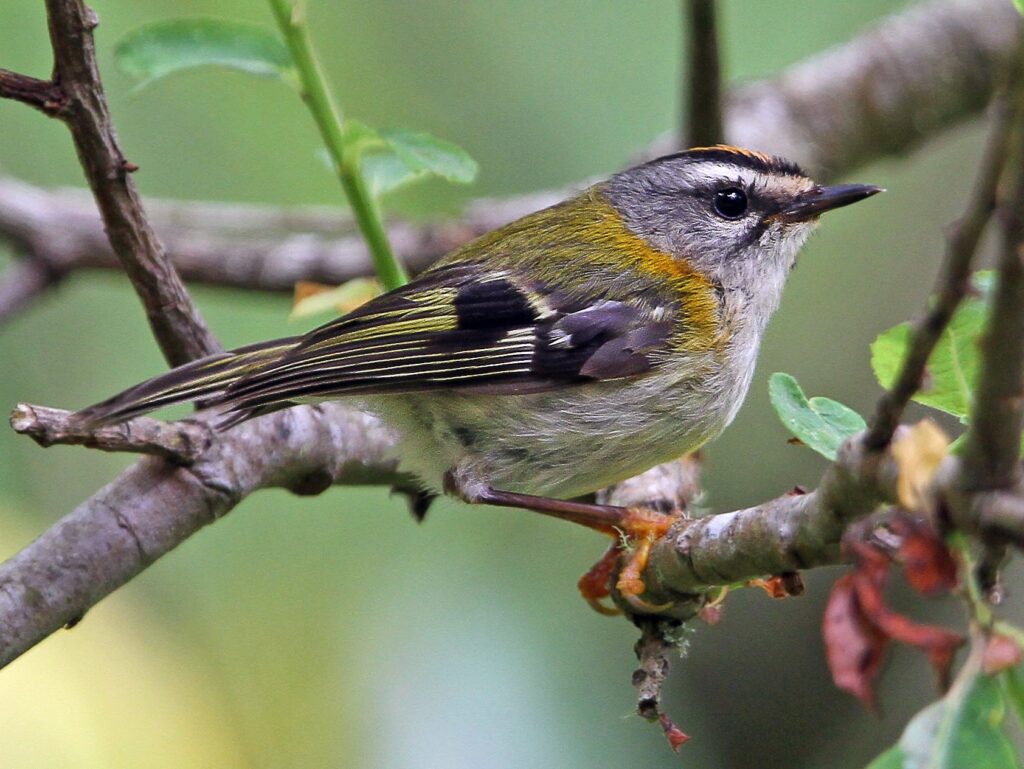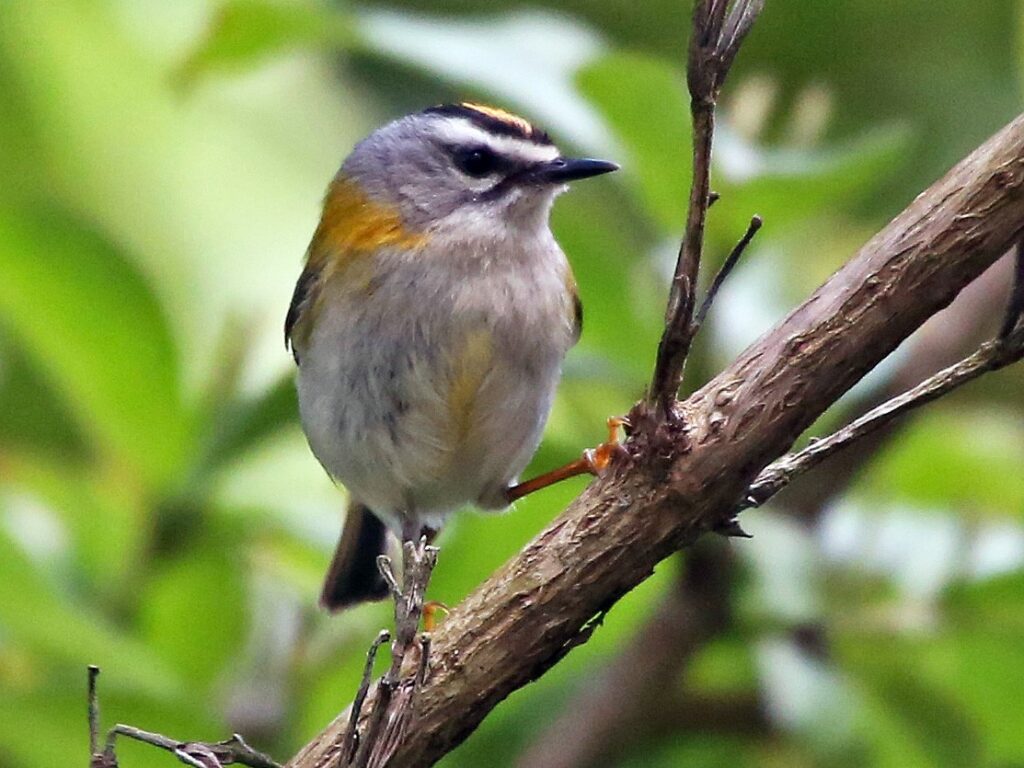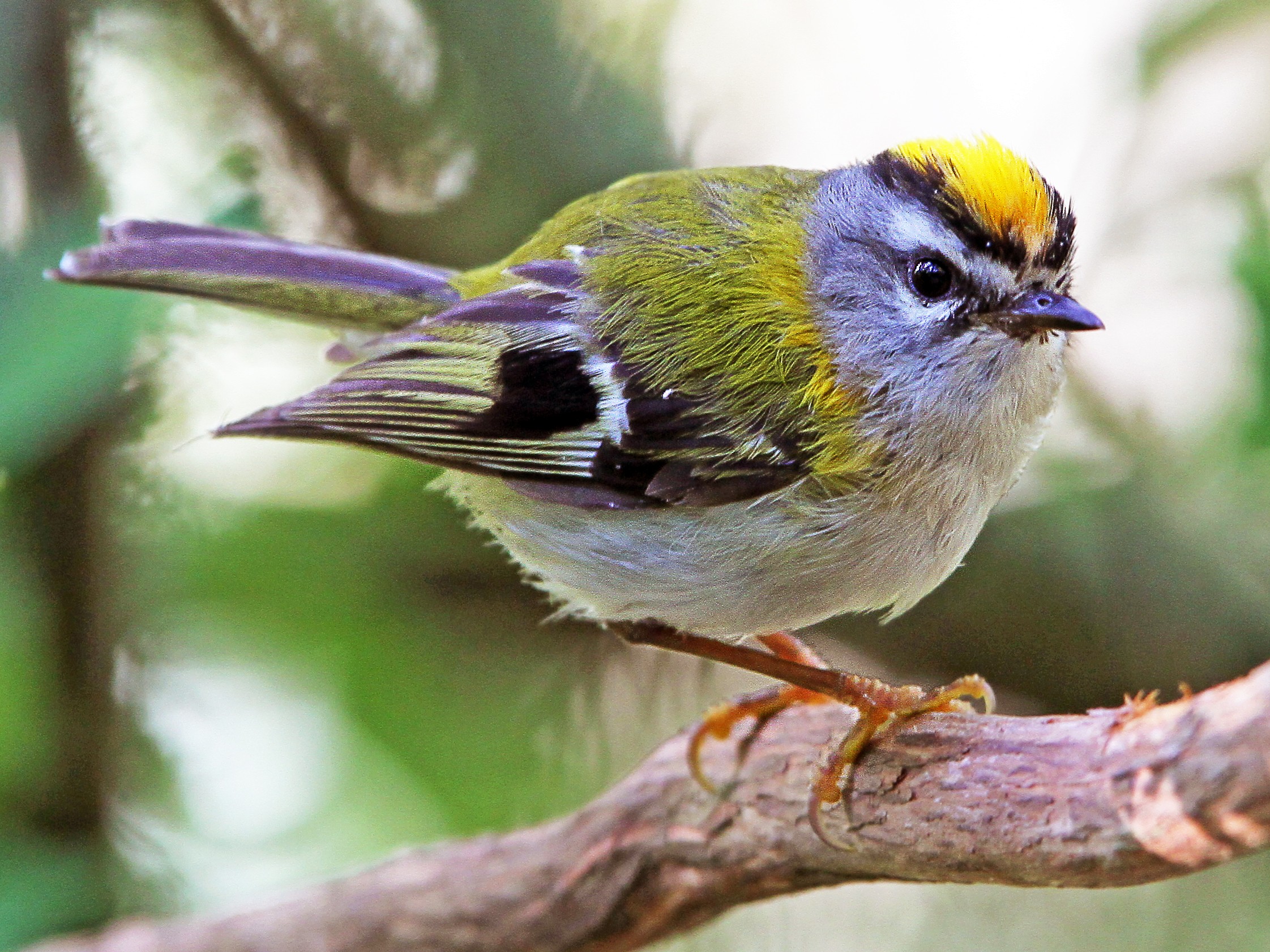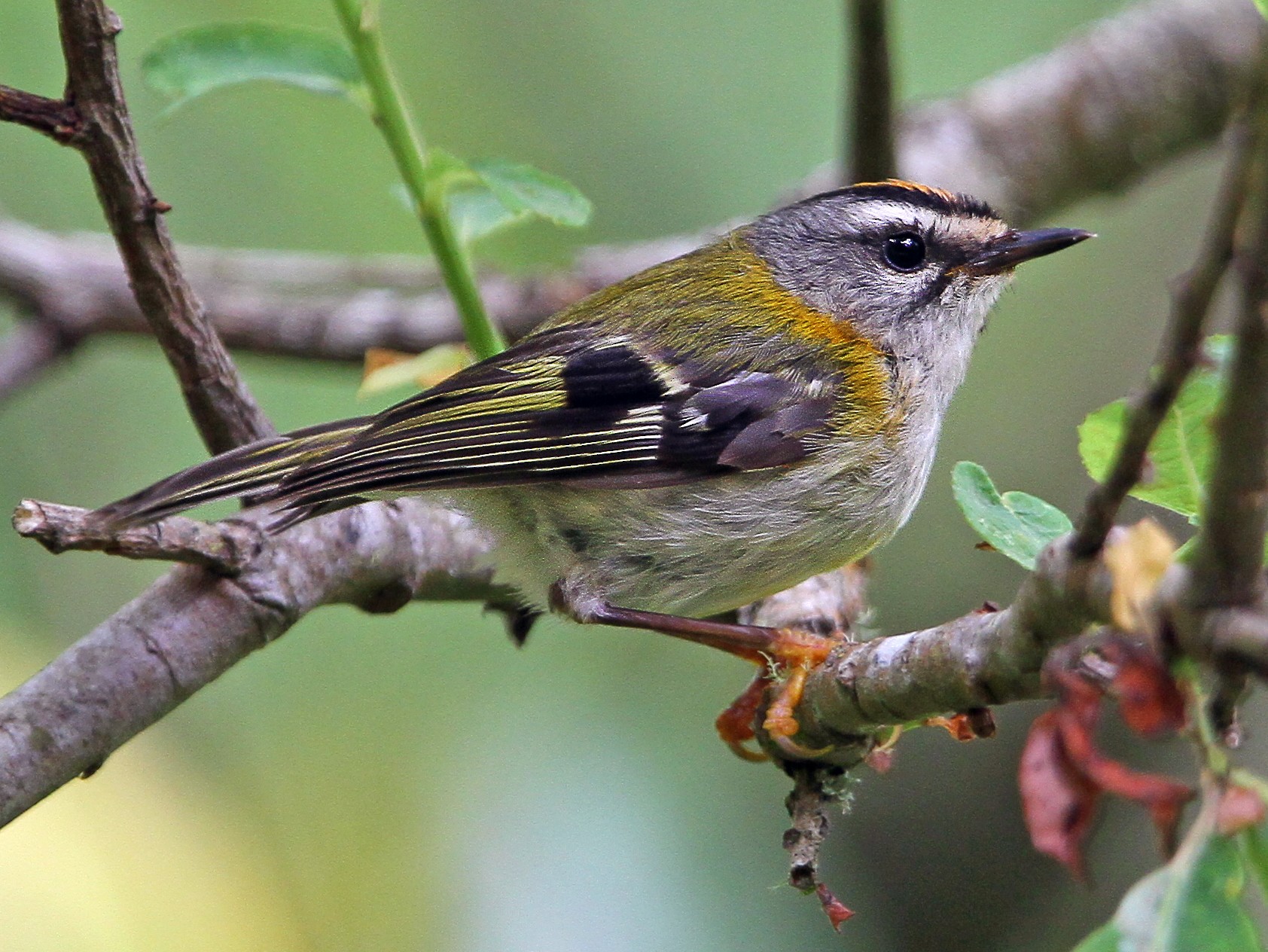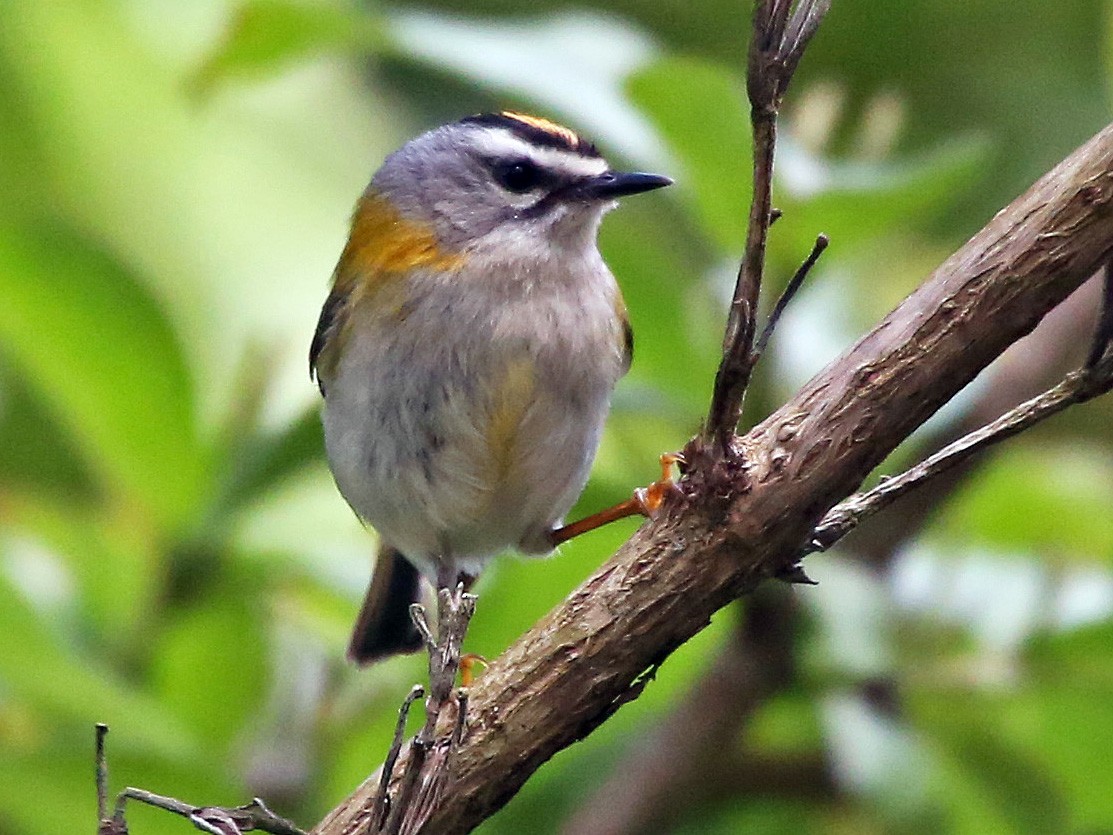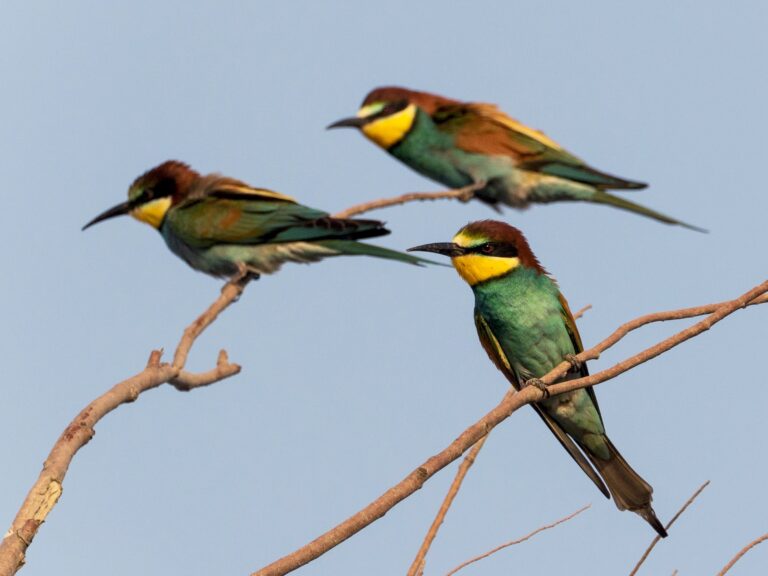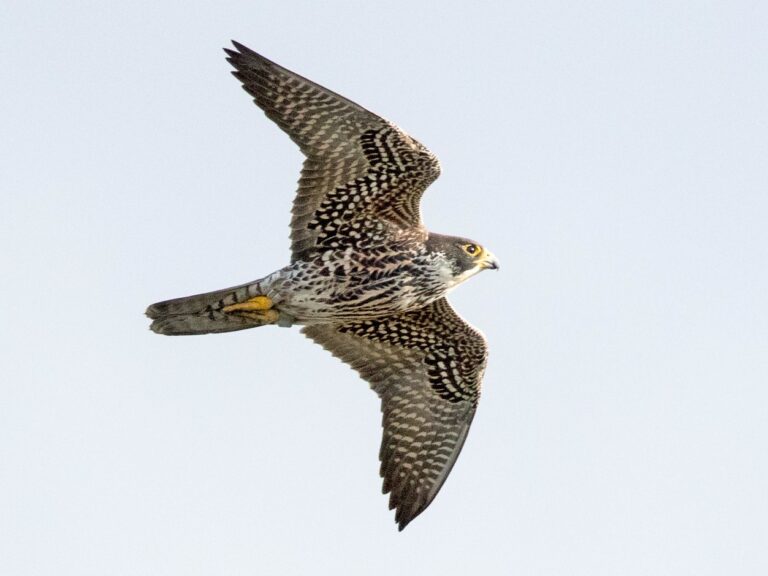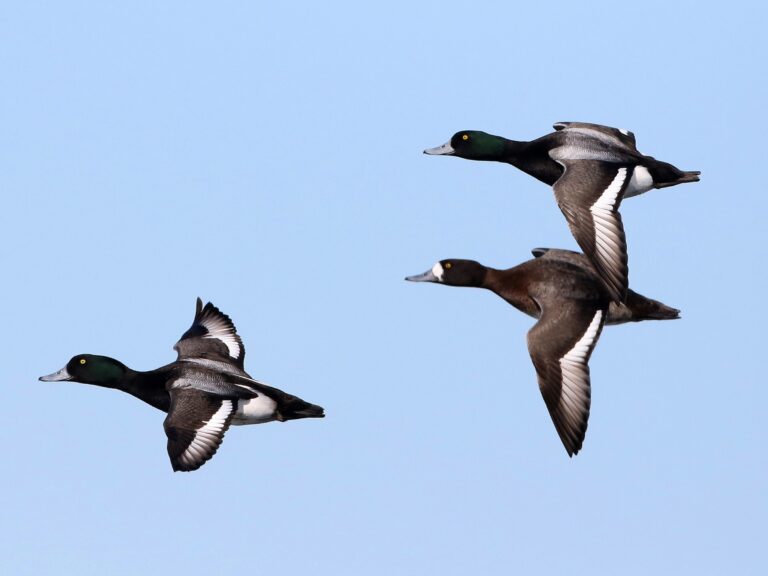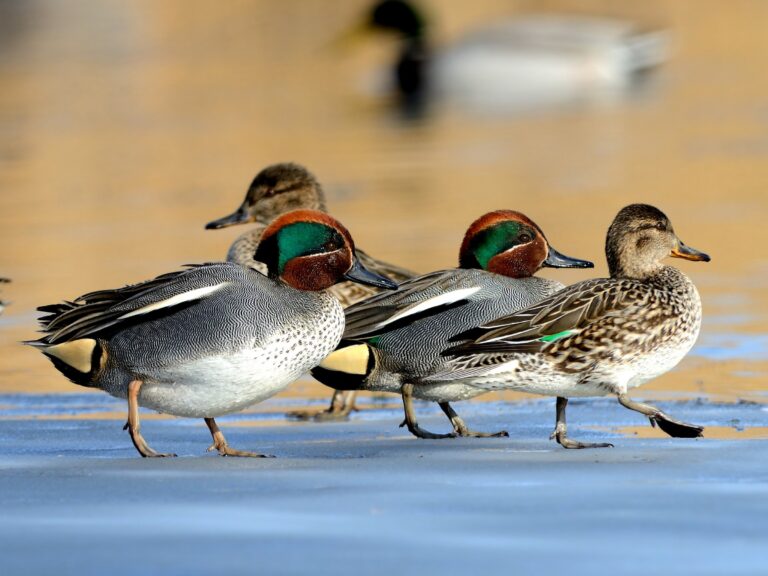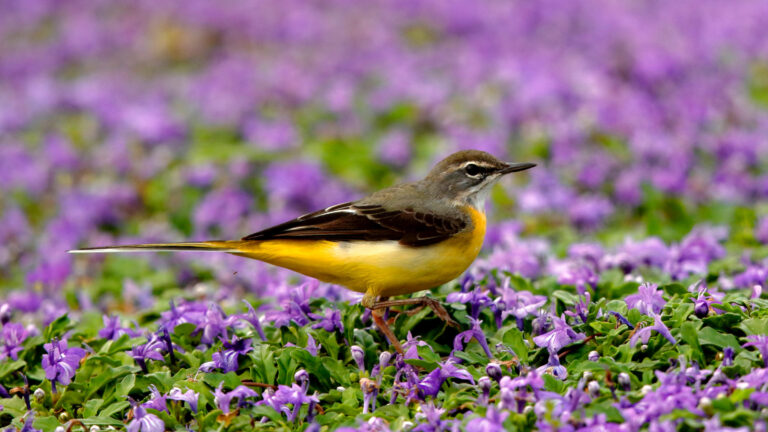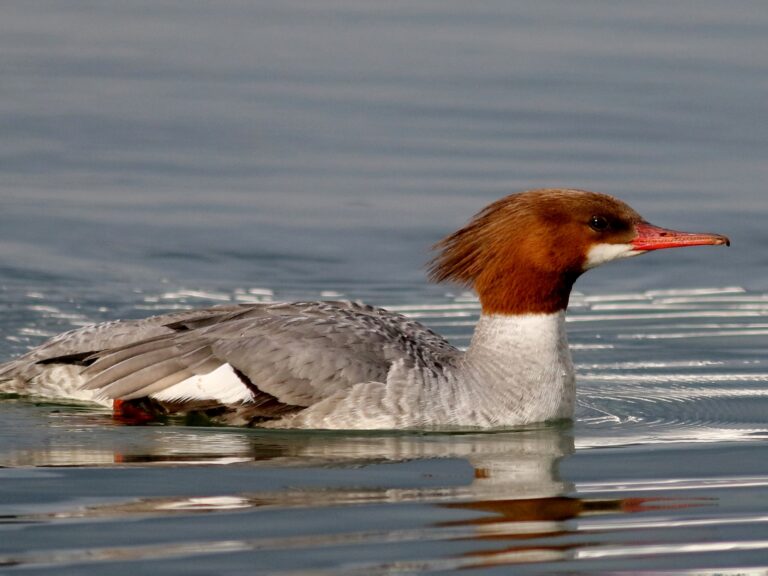Madeira Firecrest: Exploring the Unique Charm of a Rare Avian Gem
The Madeira Firecrest, known scientifically as Regulus madeirensis, is a small and vibrant bird found exclusively on the beautiful island of Madeira. This unique bird stands out not just for its striking appearance but also for its distinct vocalizations, which are crucial for communication within its dense habitat. Discovering this bird brings a glimpse of biodiversity that can thrive in isolated island ecosystems.
Known for its charming songs and lively behavior, the Madeira Firecrest relies on specific habitats within the laurel forest for nesting and foraging. As a specialist in its environment, this bird showcases the intricate balance of life unique to Madeira. Understanding its behavior and ecology can shine a light on the importance of conservation efforts for this delightful avian species.
Bird enthusiasts and nature lovers alike benefit from learning about the Madeira Firecrest, as it represents both natural beauty and ecological significance. By exploring its habitat, vocalizations, and conservation needs, observers can appreciate this bird’s role in maintaining the island’s ecosystem.
Key Takeaways
- The Madeira Firecrest is a unique species found only on Madeira.
- Its vocalizations are essential for communication and mating.
- Conservation efforts are important to preserve its habitat and population.
Taxonomy and Systematics
The Madeira Firecrest, known scientifically as Regulus madeirensis, belongs to the family Regulidae. This family includes other small songbirds, notably the Common Firecrest (Regulus ignicapillus).
Taxonomic studies place the Madeira Firecrest as a distinct species. Genetic analysis shows clear differences between it and the Common Firecrest. This supports its classification as its own species rather than a subspecies.
Vocalizations play a significant role in the Madeira Firecrest’s breeding and territorial behaviors. Its calls are unique, helping to distinguish it from other firecrest species. These vocal traits are important for mate attraction and signaling.
The Madeira Firecrest’s status is recognized by the International Organization for Standardization (ISO) codes used for birds. Its distinct characteristics contribute to the understanding of island ecosystems and the adaptations of avifauna.
Researchers have conducted various studies to explore these differences further. Studies note habitat preferences and population size in relation to genetic variation among populations. The bird’s calls and physical traits are essential for ongoing research in ecology and conservation efforts.
Overall, the Madeira Firecrest is an excellent example of how taxonomy helps in understanding biodiversity in isolated environments.
Physical Description
The Madeira Firecrest is a small, plump bird known for its vibrant colors and distinctive markings. This species displays key physical traits that make it stand out among other birds.
Size and Weight
The Madeira Firecrest is a compact bird, measuring about 10 to 11 centimeters in length. It has a wingspan of approximately 15 to 17 centimeters. Adult males typically weigh between 8 to 10 grams, while females are often slightly lighter, weighing around 7 to 9 grams. Their small size allows them to flit quickly through the branches of their forest habitat. This agility is vital when foraging for insects and spiders, which constitute a significant part of their diet.
Distinctive Markings
This bird exhibits striking plumage. The olive-green upperparts are complemented by whitish underparts that enhance its overall appearance. One of its most recognizable features is the bronze-colored patch on its wing. Additionally, the Madeira Firecrest has a notable black eye stripe and a prominent white supercilium above the eye. These markings help it blend into the dappled light of its forest environment. The white wingbars also serve as a warning signal to potential predators.
The vocalizations of the Madeira Firecrest are another important aspect of its description. They produce a series of high-pitched, melodic calls that sound like “tsit-tsit-tsit,” which can be heard throughout their habitat. These calls are crucial for communication, especially during breeding season.
Habitat and Distribution
The Madeira Firecrest thrives in specific habitats that provide the necessary conditions for its survival. Its favored locations are characterized by unique ecosystems, particularly in Portugal’s Madeira archipelago.
Madeiran Laurel Forests
Madeiran Laurel Forests are vital to the Madeira Firecrest’s habitat. These forests are rich in biodiversity and are located on the mountainous regions of Madeira, offering dense cover and high humidity levels. This environment provides ample food sources, such as insects and small arthropods.
The Firecrest is primarily found at elevations between 600 to 1,200 meters. Here, they often inhabit thick undergrowth, where they can forage and nest. These birds are known for their melodic vocalizations, often heard during the breeding season. The males have a distinct call, which plays a significant role in territory establishment and mate attraction.
The North Atlantic Ocean surrounds Madeira, influencing the climate and ecology of the region. The exposure to maritime winds creates a temperate climate, ideal for the growth of laurel forests. The specific subspecies of the Madeira Firecrest demonstrates unique adaptations to this habitat, contributing to its ecological importance in the region.
For more information on the habitat of the Madeira Firecrest, refer to resources discussing Laurel Forests and conservation efforts on Madeira.
Behavior and Ecology
The Madeira Firecrest displays unique behaviors and ecological traits that shape its survival in its island habitat. Its diet, breeding habits, and vocalizations play significant roles in its life cycle.
Diet
Madeira Firecrests are primarily insectivorous, feeding on a variety of small arthropods such as insects and spiders. Their diet can vary seasonally, depending on the availability of food sources in their habitat.
These birds will often forage in the underbrush of laurel forests, using their quick movements to catch prey. They have developed a keen ability to glean food from leaves, branches, and tree trunks.
This diet not only provides essential nutrients but also plays a role in the local ecosystem by helping to control insect populations.
Breeding Habits
During the breeding season, which typically occurs in spring, Madeira Firecrests exhibit monogamous behavior. They form pairs and establish territories where they can rear their young.
Nests are usually built in dense foliage and are carefully constructed to protect the eggs from predators. The female generally lays around 4 to 6 eggs, which both parents help to incubate.
Chicks are born altricial, meaning they are born helpless and require considerable parental care. Both parents feed the young until they are capable of independent survival.
Vocalizations
Madeira Firecrests are known for their distinctive vocalizations. Their songs are a series of high-pitched notes that carry well through their forest environment. These calls serve various purposes, including attracting mates and defending territory.
The song is often described as melodious and can vary between individuals, reflecting their unique identities. Vocal displays are critical during the breeding season, allowing them to communicate effectively within their dense habitats.
These vocalizations not only enhance social interactions but also play a crucial role in the reproductive success of the species.
Conservation Status
The Madeira Firecrest is currently listed as Least Concern by the International Union for Conservation of Nature (IUCN). This classification indicates that the species does not face immediate risks of extinction.
The population of the Madeira Firecrest remains stable, thanks to successful habitat management efforts. The species thrives in laurel forests, which provide essential nesting and feeding environments. Their adaptation to this habitat plays a key role in their conservation.
Vocalizations of the Madeira Firecrest are distinctive and important for communication. Males often sing complex songs during the breeding season to establish territories and attract mates. Their calls contribute to the overall biodiversity of the ecosystems they inhabit.
While currently not threatened, continued monitoring is vital to ensure the species remains secure. Issues such as habitat destruction could potentially impact their future. Conservation efforts focus on preserving their natural habitat to mitigate these risks.
In comparison, many other bird species face much greater threats, leading to classifications like Threatened or Extinct. The Madeira Firecrest’s status highlights the importance of targeted conservation strategies to maintain healthy populations.
For more detailed information on conservation efforts and habitat associations, visit the Wildlife of Madeira and the Canary Islands resource. This connection underscores the importance of awareness and proactive measures in wildlife conservation.
Cultural Significance
The Madeira Firecrest holds an important place in the avian culture of Madeira. Its vibrant presence adds to the island’s rich biodiversity and has become a symbol of natural heritage. The bird’s acoustic beauty and ecological role contribute to birding and conservation efforts on the island.
Madeira in Avian Culture
Madeira is known for its unique bird species, including the Madeira Firecrest and other passerine birds. The presence of diverse species, such as Zino’s Petrel and Blackcap, enhances the island’s appeal for birdwatchers and researchers.
The Madeira Firecrest is particularly noted for its distinctive vocalizations. Their melodious songs resonate throughout the forest, contributing to the island’s natural soundscape. These vocal characteristics make it an exciting species for birding enthusiasts.
Birdwatchers often seek out the Madeira Firecrest for its beauty and song. Efforts to promote birding tourism support conservation initiatives. This encourages a greater appreciation for local wildlife and habitats, ensuring the preservation of this cultural and ecological treasure.
Frequently Asked Questions
The Madeira Firecrest is a unique bird species with specific characteristics and habitat preferences. Many people are curious about its vocalizations, physical traits, and conservation status.
What does the Madeira Firecrest sound like?
The Madeira Firecrest has a distinctive call that consists of high-pitched, clear notes. Its song is often described as a series of melodic phrases that vary in tempo. This vocalization is an important part of its mating rituals and territory defense.
What are the distinctive characteristics of the Madeira Firecrest compared to the Common Firecrest?
The Madeira Firecrest is slightly larger than the Common Firecrest, with a brighter yellow-green crown. Its facial markings are also more pronounced, featuring a bold black line through the eye. These features help differentiate it from similar species during observation.
Where can the Madeira Firecrest be found on the island of Madeira?
The Madeira Firecrest is primarily found in the mountainous regions of Madeira. It prefers areas with dense vegetation, such as laurel forests and scrub. Birdwatchers often spot it in the central part of the island, where its population is concentrated.
What is the typical habitat of a Madeira Firecrest?
The Madeira Firecrest thrives in specific habitats that provide adequate cover and food sources. It is commonly found in mixed forests and areas rich in shrubs. These environments support its feeding habits and nesting preferences.
How does the call of the Madeira Firecrest differ from other bird species in Madeira?
The call of the Madeira Firecrest stands out due to its unique tonal quality. Unlike other bird species on the island, its high-pitched notes carry well through the forest. This distinctiveness aids in communication among individuals, particularly during mating season.
What are the conservation status and threats faced by the Madeira Firecrest?
The Madeira Firecrest faces several threats, including habitat loss due to urbanization and agriculture. Its population is vulnerable, and conservation efforts are in place to protect its habitat. Studies continue to monitor its status to ensure long-term survival.
